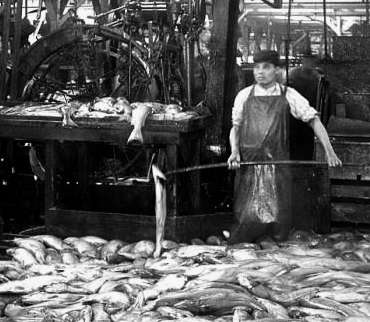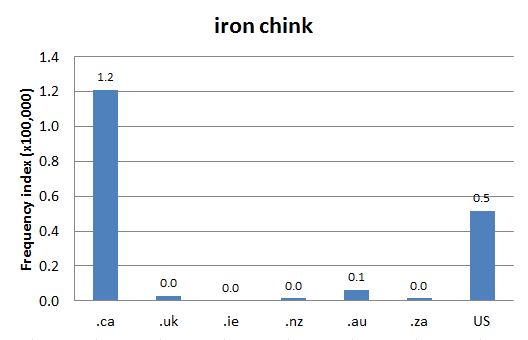DCHP-2
iron chink iron "chink", Iron Chink DCHP-2 (October 2016)
n. — Ethnicities, derogatory, extremely offensive, historical
a machine to gut and clean fish (see Image 1).
Type: 5. Frequency — The first iron chink, also known as the Smith Butchering Machine, was invented in 1905 in the American Pacific Northwest, then sold to Canadian canneries along the Pacific Coast a year later (Newell 1989: 262). These factories canned salmon along the Canadian West Coast and the American Pacific Northwest. Edmund A. Smith, a Canadian living in Seattle, devised the plans for the machine to improve productivity at his cannery (see Washington State Historical Society reference). When fully implemented, the machine drastically multiplied output from the fisheries, eliminating the need for human labour in most aspects of fish processing. The iron chink acquired its nickname as a result of massive job losses, jobs which had been predominantly filled by Chinese immigrants (Newell 1989: 262). The term currently appears most frequently in Canada (see Chart 1).
See also OED-3, s.v. "Iron Chink", which is marked "N. Amer.".See also: chink
- The term is included for reasons of historical accuracy and completeness. It is not intended, as clearly indicated in the usage labels "derogatory" and "extremely offensive", as a term for current use or a term, meaning or usage that is in any way condoned.
References:
Images:

Image 1: A worker loading an iron chink (Source: Pacific Fisherman Annual 1906, copyright expired)
Chart 1: Internet Domain Search, 28 Apr. 2015
